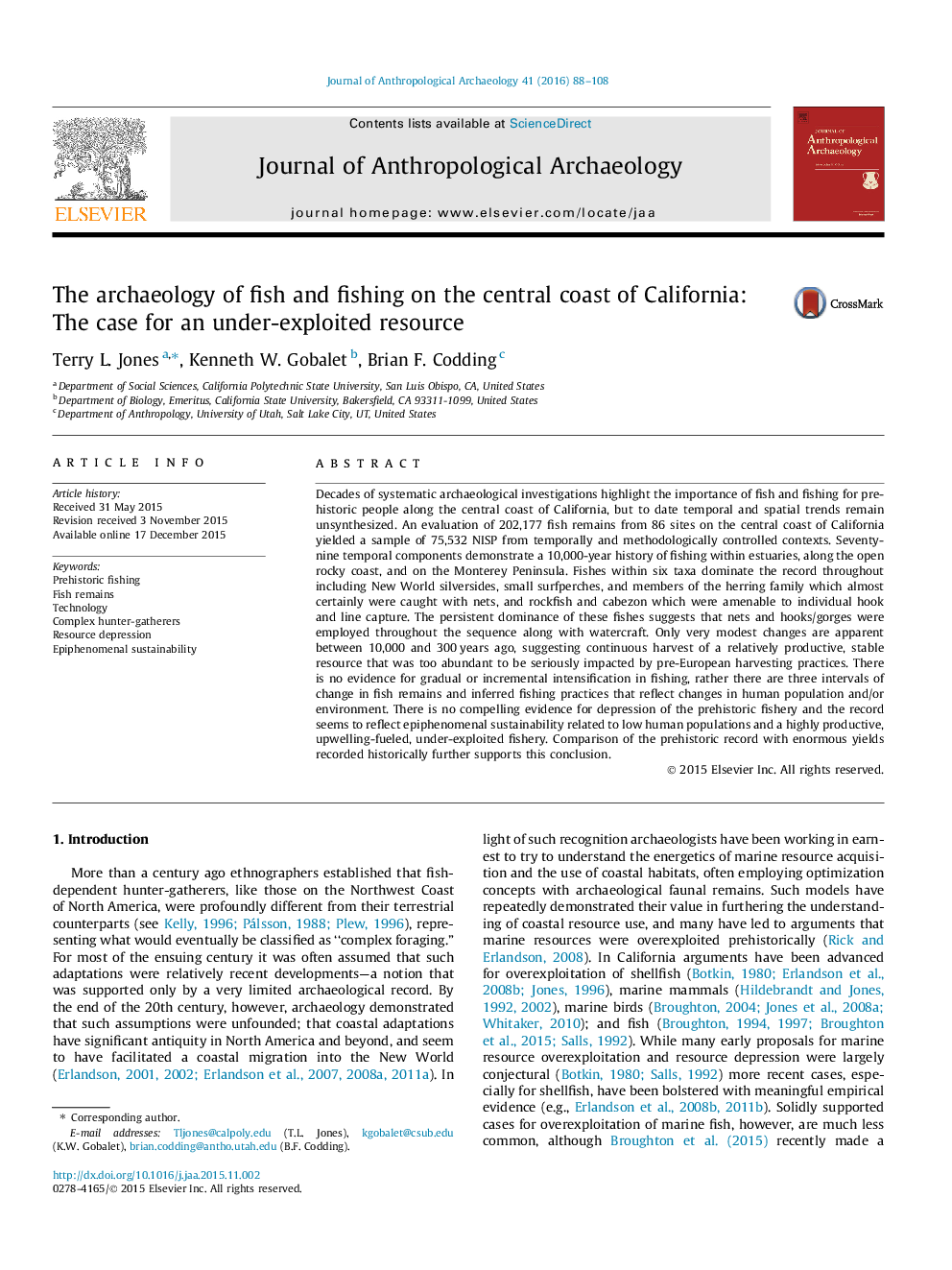| کد مقاله | کد نشریه | سال انتشار | مقاله انگلیسی | نسخه تمام متن |
|---|---|---|---|---|
| 1034875 | 1483849 | 2016 | 21 صفحه PDF | دانلود رایگان |
• 75,532 fish remains illustrate a 10,000-year history of fishing on the central California coast.
• Nets, hooks/gorges, and watercraft were used throughout the sequence.
• Very modest changes between 10,000 and 300 years ago, suggest a productive, stable resource.
• No evidence for depression of the prehistoric fishery; rather epiphenomenal sustainability
Decades of systematic archaeological investigations highlight the importance of fish and fishing for prehistoric people along the central coast of California, but to date temporal and spatial trends remain unsynthesized. An evaluation of 202,177 fish remains from 86 sites on the central coast of California yielded a sample of 75,532 NISP from temporally and methodologically controlled contexts. Seventy-nine temporal components demonstrate a 10,000-year history of fishing within estuaries, along the open rocky coast, and on the Monterey Peninsula. Fishes within six taxa dominate the record throughout including New World silversides, small surfperches, and members of the herring family which almost certainly were caught with nets, and rockfish and cabezon which were amenable to individual hook and line capture. The persistent dominance of these fishes suggests that nets and hooks/gorges were employed throughout the sequence along with watercraft. Only very modest changes are apparent between 10,000 and 300 years ago, suggesting continuous harvest of a relatively productive, stable resource that was too abundant to be seriously impacted by pre-European harvesting practices. There is no evidence for gradual or incremental intensification in fishing, rather there are three intervals of change in fish remains and inferred fishing practices that reflect changes in human population and/or environment. There is no compelling evidence for depression of the prehistoric fishery and the record seems to reflect epiphenomenal sustainability related to low human populations and a highly productive, upwelling-fueled, under-exploited fishery. Comparison of the prehistoric record with enormous yields recorded historically further supports this conclusion.
Journal: Journal of Anthropological Archaeology - Volume 41, March 2016, Pages 88–108
